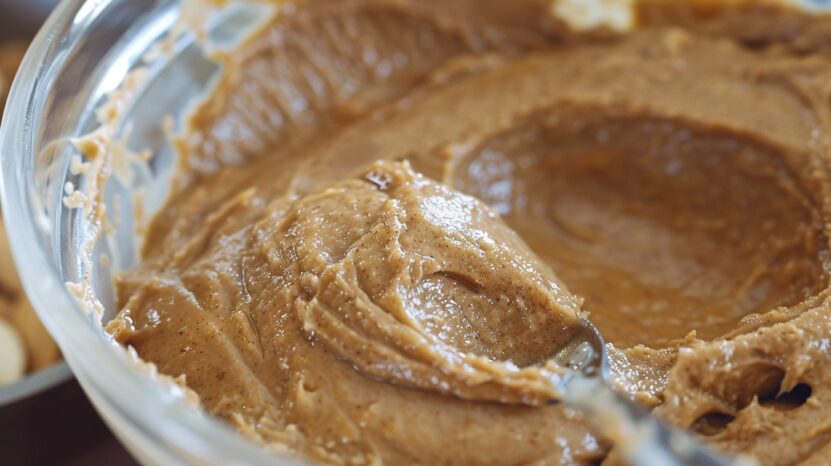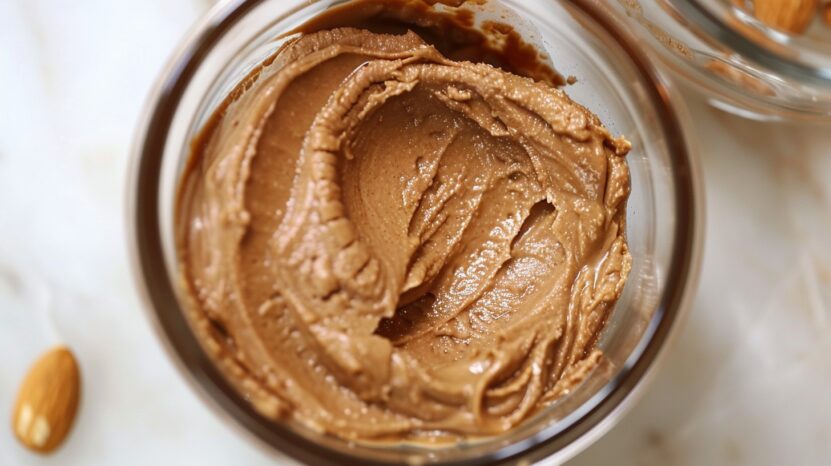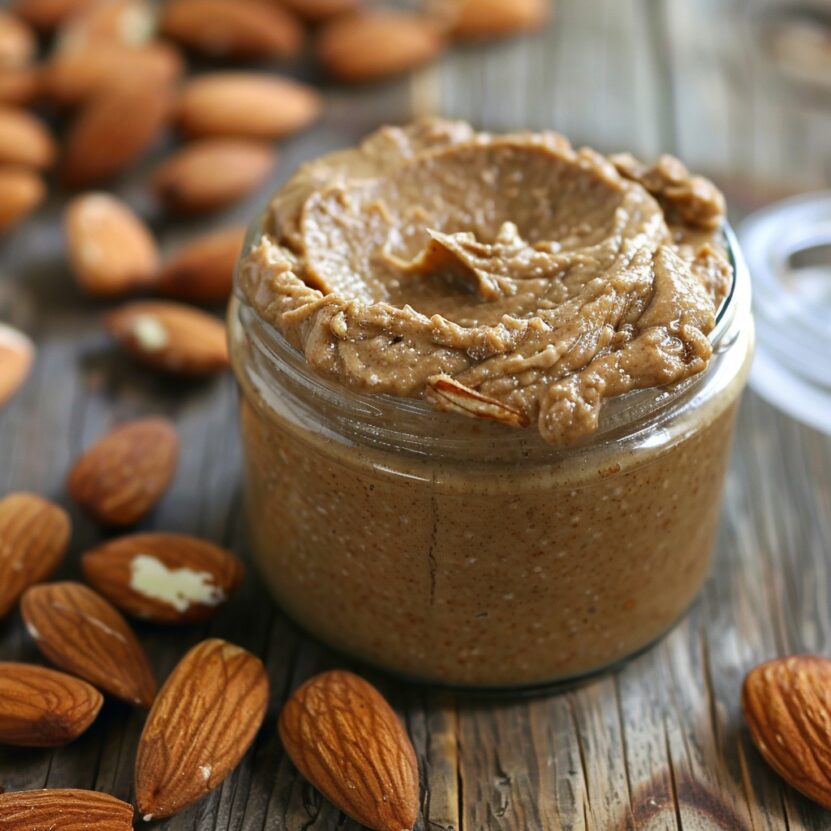
Share Post:
Alright, listen up! If you’re a big fan of almond butter like me, I’ve got a super handy tip for you. Freezing that stuff can really help it stay fresh for way longer. Here’s the deal – just follow a few simple steps and you can enjoy your almond butter for months without it going bad on you.
Sure, the texture might change a bit, but the taste and all the good nutrients will still be there. Pretty neat, right?
Almond butter is a nutritious and delicious spread that has gained popularity for its rich taste and health benefits. Whether you enjoy it on toast, in smoothies, or as a dip, almond butter is a versatile ingredient that can enhance many dishes. However, you might find yourself wondering if you can freeze almond butter to extend its shelf life or save money by buying in bulk.
The good news is that you can freeze almond butter, and doing so can help maintain its freshness for a longer period. I’ll go over the steps to freeze almond butter, the ideal temperature for freezing, and how to store it properly.
Freezing Almond Butter: Why and How
Almonds have been cultivated for over 4,000 years, originating from the Middle East. Almond butter, however, became popular more recently as a healthier alternative to peanut butter.
Freezing almond butter is a simple and effective way to preserve its quality. Almond butter, like many other nut butters, can become rancid if left at room temperature for extended periods. Freezing helps to slow down the oxidation process, which is the main cause of spoilage.
To freeze almond butter, follow these straightforward steps:
- Choose the Right Container: Use an airtight container or a freezer-safe bag. Ensure that the container is clean and dry to prevent contamination.
- Portioning: Divide the almond butter into portions that you would typically use. This way, you can thaw only what you need without defrosting the entire batch.
- Labeling: Label the container with the date of freezing. This will help you keep track of how long the almond butter has been in the freezer.
- Freezing: Place the container in the freezer, making sure it is placed on a flat surface. Almond butter should be frozen at a temperature of 0°F (-18°C) or lower to ensure it remains solid and maintains its quality.
Ideal Freezing Temperature
Almond butter is packed with essential nutrients. It contains high levels of vitamin E, magnesium, fiber, and healthy fats. These nutrients are beneficial for heart health, bone strength, and overall wellness.
To effectively freeze almond butter, it is important to maintain a consistent freezer temperature of 0°F (-18°C) or lower. At this temperature, the almond butter will freeze completely, slowing down any enzymatic and microbial activity that could lead to spoilage.
This temperature also helps in maintaining the texture and flavor of the almond butter over time.
Thawing and Using Frozen Almond Butter
Unlike many other spreads, almond butter has a low glycemic index, making it a suitable option for individuals managing blood sugar levels. It provides steady energy release without causing rapid spikes in blood sugar.
Thawing frozen almond butter is a crucial step to ensure that it retains its creamy texture and rich flavor. The best way to thaw almond butter is to transfer it from the freezer to the refrigerator. This slow thawing process helps maintain consistency and prevents the butter from becoming too runny. It is important not to microwave almond butter to thaw it, as this can alter its texture and flavor.
Once thawed, stir the almond butter well before using it. The oils may have separated during freezing, but a good stir will help bring back its original creamy consistency. Thawed almond butter can be used just like fresh almond butter in your favorite recipes or as a spread.
Characteristics of Almond Butter
Almond butter is naturally gluten-free and dairy-free, making it an excellent choice for people with celiac disease, lactose intolerance, or dairy allergies.
Almond butter is made from ground almonds and is known for its smooth, creamy texture and nutty flavor. It is rich in healthy fats, proteins, vitamins, and minerals, making it a popular choice for health-conscious individuals.
Here are some key characteristics of almond butter:
- Nutrient-Rich: Almond butter is a great source of healthy monounsaturated fats, which are beneficial for heart health. It also contains protein, fiber, vitamin E, magnesium, and potassium.
- Flavor Profile: It has a distinct nutty flavor that can vary slightly depending on whether the almonds were roasted before being made into butter.
- Texture: The texture of almond butter can range from smooth to chunky, depending on the processing method and the inclusion of almond pieces.
- Shelf Life: Unopened almond butter can last for several months at room temperature, but once opened, it should be refrigerated to maintain its freshness and prevent the natural oils from becoming rancid.
Texture and Taste
Butter sculpting is a popular art form in many countries. In the United States, butter sculptures are a traditional feature of state fairs, with artists creating intricate designs, often depicting animals or historical scenes.
Freezing can slightly affect the texture of almond butter. Some may notice a slight change in consistency, but this does not impact the taste or nutritional value. The texture might become a bit grainier, but with proper stirring, it should return to a smooth state. The flavor of almond butter remains largely unchanged after freezing, maintaining its rich, nutty taste that makes it a favorite for many.
It’s important to note that freezing does not kill bacteria, so always use clean utensils when handling almond butter to avoid contamination.
Benefits of Freezing Almond Butter
Almond butter is rich in antioxidants, particularly vitamin E. These antioxidants help protect the body against oxidative stress and reduce inflammation, which can lower the risk of chronic diseases.
Freezing almond butter offers several benefits. Firstly, it extends the shelf life of the product, allowing you to buy in bulk and save money. It also reduces waste, as you can freeze portions that you may not use immediately. This is particularly beneficial for those who use almond butter infrequently or have a large family to cater to. Additionally, freezing can help maintain the nutritional quality of almond butter, preserving its healthy fats and proteins.
Another advantage is that it can help in meal planning and preparation. Having a stock of almond butter in the freezer means you always have a healthy option ready to go for snacks, recipes, or smoothies.
Is it healthy to eat almond butter everyday?
You can eat this substance regularly if you want to – but it’s important to make sure that you’re only consuming it in moderation. There are a lot of calories in almond butter, and you could end up facing issues with your weight if you eat too much at once.
Tips for Freezing and Storing Almond Butter
- Use High-Quality Almond Butter: Choose almond butter without added oils or preservatives for the best freezing results. Pure almond butter freezes better and maintains its quality longer.
- Avoid Exposure to Air: Air can cause almond butter to oxidize and spoil. Ensure that the container is tightly sealed before freezing.
- Store in Small Portions: Freezing in small portions not only helps with thawing but also ensures that you use up the almond butter quickly, reducing the risk of spoilage after thawing.
- Maintain Freezer Temperature: Keep your freezer at a consistent temperature of 0°F (-18°C) or lower to ensure that the almond butter remains frozen solid and does not undergo temperature fluctuations, which can affect its quality.
Recipes to Try with Thawed Almond Butter
Thawed almond butter can be used in various delicious recipes. Here are a few ideas to inspire you:
- Almond Butter Smoothie: Blend thawed almond butter with your favorite fruits, yogurt, and a splash of milk for a nutritious and tasty smoothie.
- Almond Butter Energy Balls: Combine thawed almond butter with oats, honey, and dried fruits to make energy balls that are perfect for a quick snack.
- Almond Butter Cookies: Use thawed almond butter in place of peanut butter in cookie recipes for a nutty twist.
- Almond Butter Bread: Whip up a loaf of almond butter bread (consider scoring it so that it can get baked better) by mixing thawed almond butter with whole wheat flour, a touch of honey, and a few eggs.
These recipes are just a starting point. Feel free to get creative and experiment with using almond butter in different ways.
Conclusion
Freezing almond butter is a practical way to extend its shelf life and maintain its freshness. By following simple steps for freezing and thawing, you can enjoy almond butter for months without worrying about it going bad. While freezing may slightly alter the texture, the taste and nutritional value remain intact, making it a convenient option for those who love to use almond butter in their daily meals.
Whether you use it as a spread, in smoothies, or in baking, almond butter is a versatile ingredient that can be easily stored and enjoyed. Next time you find yourself with an excess supply of almond butter, don’t hesitate to freeze it and enjoy its benefits for longer.
Related Posts:
- Can You Use a Blender as a Food Processor? Things…
- Is That Online Cake Recipe Legit? Why You Shouldn’t…
- How To Freeze Lasagna? Save Time and Effort
- How to Freeze Chives? A Complete Guide to Preserving…
- Jalapeño Cornbread Recipe + How to Freeze Cornbread?
- How To Freeze Homemade Enchiladas: Step-by-Step Guide












